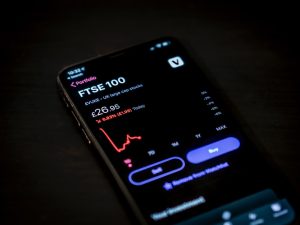Thinkorswim is a popular trading platform that allows traders to access various markets, including forex, stocks, futures, and options. As a forex trader, you may want to know how to add volume indicators on your Thinkorswim chart to analyze price movements and make better trading decisions. In this article, we will discuss how to get volume on your Thinkorswim forex chart.
What is volume in forex trading?
Volume in forex trading refers to the number of units of a currency pair that are traded within a specific time frame. It is a key indicator that shows the level of activity in the market and helps traders to identify trends, reversals, and breakouts. High volume usually indicates that there is strong interest in a currency pair, while low volume may suggest that the market is consolidating or losing momentum.
Why is volume important in forex trading?
Volume is an essential tool in forex trading because it provides valuable information about the strength and direction of price movements. By analyzing volume, traders can determine whether a trend is likely to continue or reverse, and identify potential support and resistance levels. Volume can also help traders to confirm or refute other technical indicators, such as moving averages or price patterns.
How to add volume indicators on your Thinkorswim forex chart?
Step 1: Open a forex chart
To add volume indicators on your Thinkorswim forex chart, you need to first open a chart for a currency pair that you want to analyze. To do this, go to the MarketWatch tab on the left-hand side of the platform, select Forex, and choose the currency pair you want to trade. Right-click on the pair and select “Chart” to open a new chart.
Step 2: Access the “Studies” menu
Once you have opened a forex chart, you need to access the “Studies” menu to add volume indicators. To do this, click on the “Studies” button at the top of the chart, and select “Edit studies” from the drop-down menu.
Step 3: Add volume indicators
In the “Edit studies” window, you can add various volume indicators to your Thinkorswim forex chart. Some of the popular volume indicators include:
– Volume: This is a simple indicator that shows the total volume of a currency pair over a specified period. To add the volume indicator, select “Volume” from the list of studies and click “OK.
– On Balance Volume (OBV): OBV is a momentum indicator that shows whether buying or selling pressure is increasing or decreasing. It is calculated by adding the volume on up days and subtracting the volume on down days. To add the OBV indicator, select “On Balance Volume” from the list of studies and click “OK.
– Chaikin Money Flow (CMF): CMF is an oscillator that measures the accumulation and distribution of a currency pair based on both price and volume data. It is calculated by dividing the sum of the Money Flow Volume over a specified period by the sum of the volume over the same period. To add the CMF indicator, select “Chaikin Money Flow” from the list of studies and click “OK.”
Step 4: Customize the volume indicators
Once you have added the volume indicators to your Thinkorswim forex chart, you can customize the settings to suit your trading style and preferences. You can change the period, color, and style of the indicators, as well as adjust the levels for overbought and oversold conditions.
Conclusion
In conclusion, volume is an important factor in forex trading that can help traders to make better-informed decisions. By adding volume indicators to your Thinkorswim forex chart, you can analyze market activity, identify trends, and confirm other technical indicators. Remember to customize the indicators to suit your trading style and always use volume in conjunction with other analysis tools for more accurate results.






